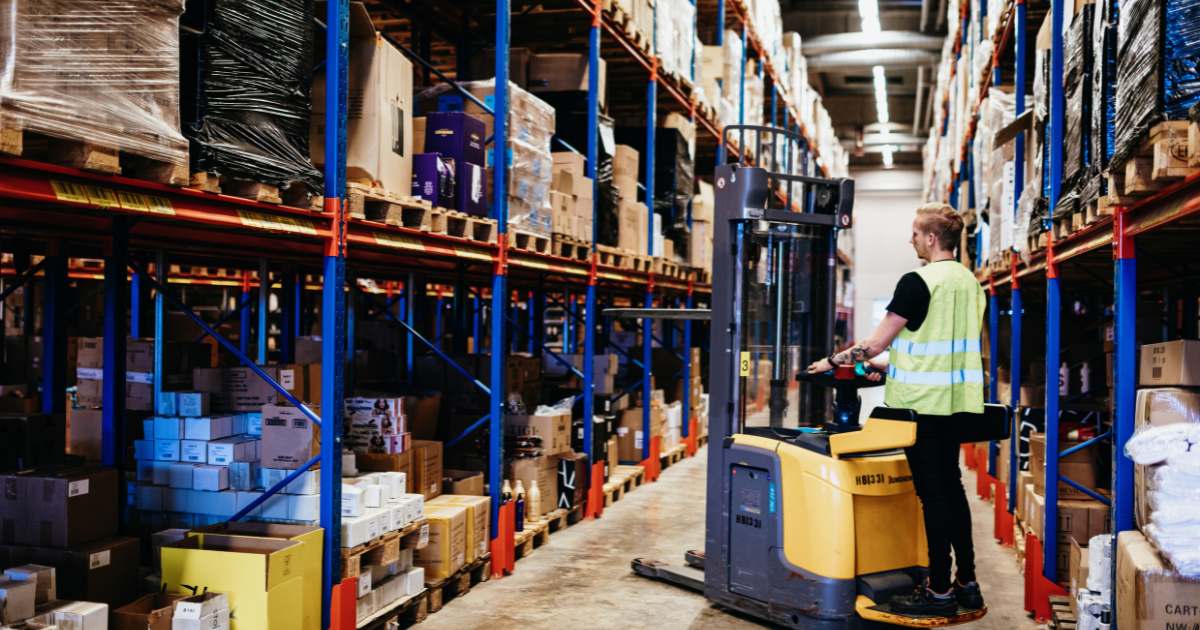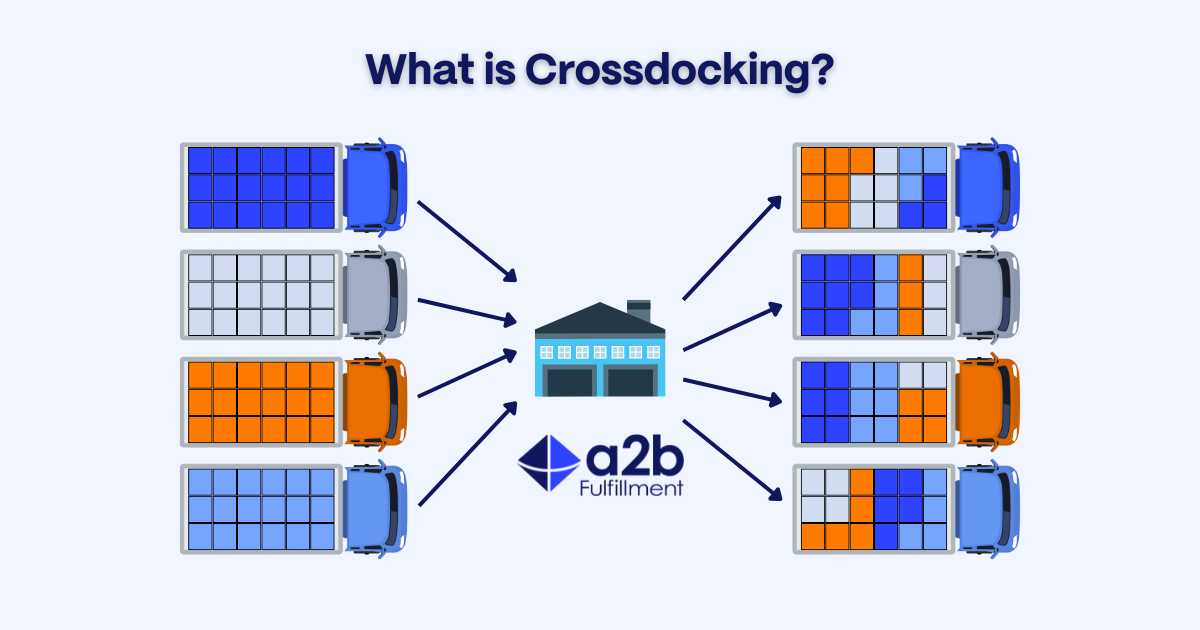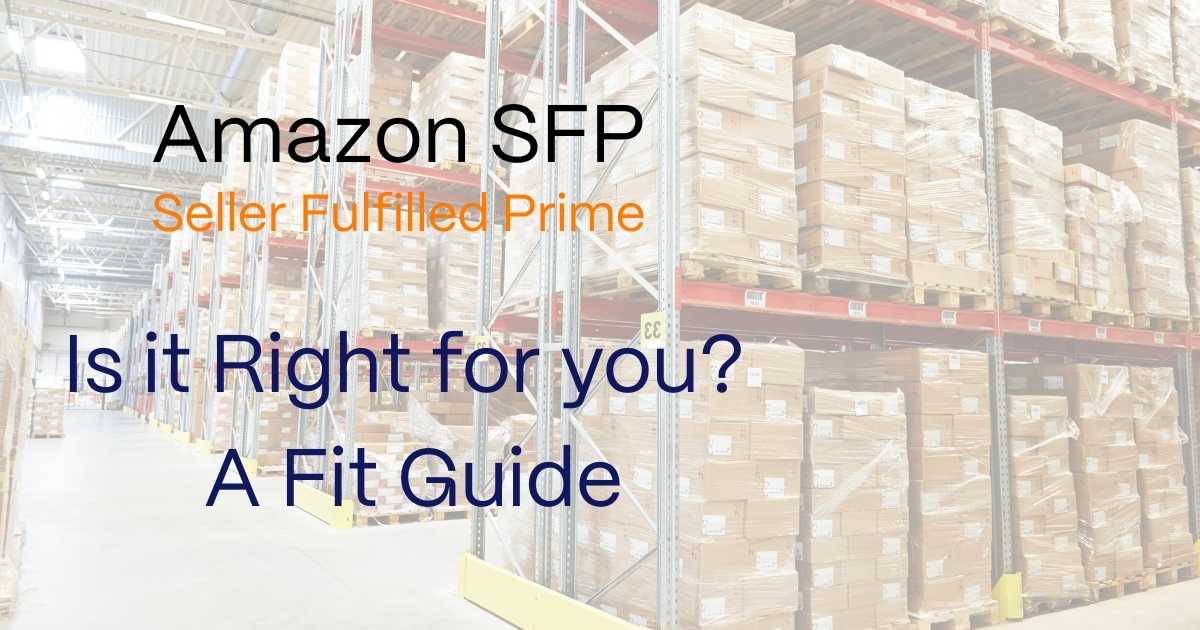How to Switch 3PLs: The Definitive Guide
Switching third-party logistics (3PL) providers is a pivotal decision for businesses aiming to optimize their supply chain, reduce operational costs, and enhance customer satisfaction. A 3PL provider handles critical functions like warehousing, order fulfillment, and value-added services, making their performance directly tied to your business’s success.
However, sticking with an underperforming or misaligned 3PL can lead to inefficiencies, increased costs, delayed shipments, and dissatisfied customers. Recognizing when it’s time to switch is crucial for maintaining a competitive edge.
Some signs that indicate the need for a switch include consistent service failures, such as missed delivery deadlines or frequent order errors, which can erode customer trust. One crucial indicator for change is if your current 3PL lacks the scalability to support your business’s growth or uses outdated technology that hinders efficiency, it may be time to explore new options.
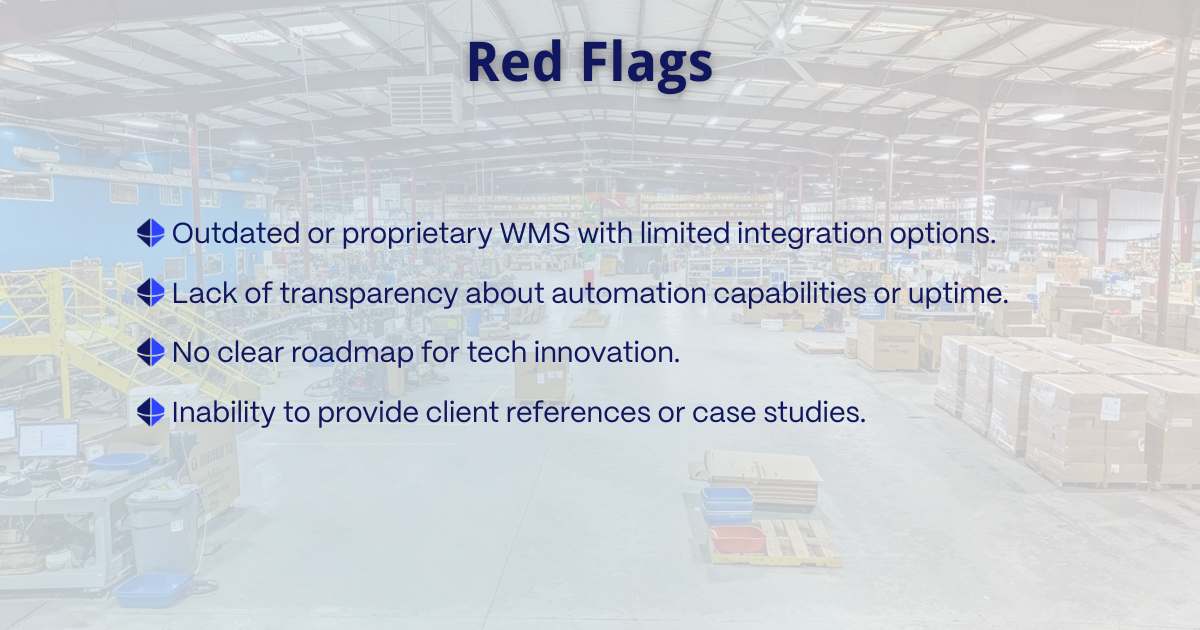
Misaligned goals, such as a provider prioritizing cost-cutting over quality, can also signal the need for change. By proactively addressing these issues, businesses can transition to a 3PL partner that aligns with their strategic objectives, supports growth, and delivers measurable value.
Signs You Need to Switch 3PLs
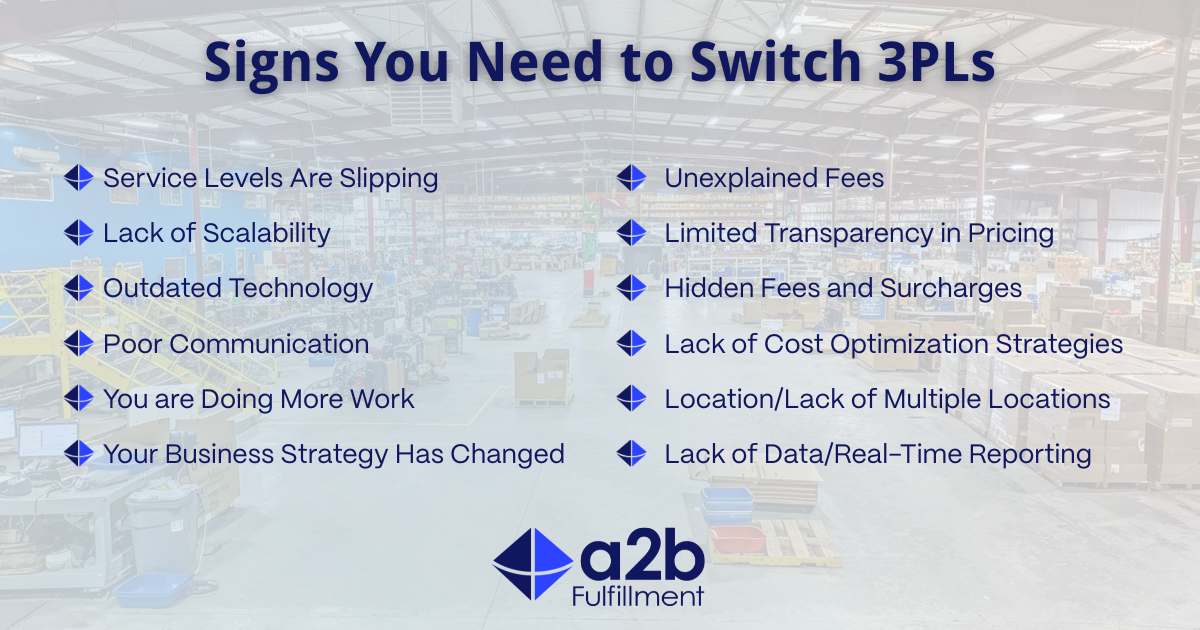
Switching 3PLs is not just about fixing problems; it’s an opportunity to transform your logistics operations into a competitive advantage. A well-executed transition can lead to improved cost efficiency, access to advanced technology, and better customer experiences. This guide provides a comprehensive roadmap for navigating the process, from evaluating potential partners to avoiding common pitfalls, ensuring a seamless switch that drives long-term success.
What Are Some Benefits to Switching 3PLs?
Switching to a new 3PL provider can unlock significant advantages that enhance your business’s operational efficiency and market position. Below are the key benefits of making a strategic switch:
Enhanced Cost Efficiency
A new 3PL can offer more competitive pricing models tailored to your business needs. A successful 3PL like a2b can optimize shipping routes to reduce transportation costs. Your new 3PL should have an advanced warehouse management system to minimize overstocking or stockouts.
By leveraging economies of scale, a high-performing 3PL can lower your per-unit logistics costs, freeing up capital for other business priorities. Additionally, some providers offer flexible pricing structures, such as pay-per-use models, which can be particularly beneficial for businesses with fluctuating demand.
Access to Advanced Technology and Automation
Modern 3PLs invest heavily in cutting-edge technologies like business intelligence (BI), machine learning, and robotics to streamline operations. These tools enable real-time inventory tracking, predictive demand forecasting, and automated order processing, which reduce errors and improve efficiency.
For instance, a 3PL with an advanced warehouse management system (WMS) can optimize picking and packing processes, leading to faster order fulfillment. They may also have your inventory distributed in multiple locations. This methodology enables the 3PL to select inventory that is closest to the consumer, reducing both shipping time and shipping costs. By switching to a tech-forward provider, your business can stay ahead of industry trends and meet evolving customer expectations.
Improved Customer Service and Satisfaction
A reliable 3PL ensures faster, more accurate deliveries, which directly impacts customer satisfaction. Features like same-day shipping, real-time tracking, and flexible return policies can set your business apart in a competitive market. Moreover, a 3PL with strong customer service capabilities can handle inquiries and resolve issues promptly, enhancing the overall customer experience. Satisfied customers are more likely to become repeat buyers, boosting your brand’s reputation and revenue.
These benefits contribute to a more resilient and agile supply chain, enabling your business to adapt to market changes and customer demands effectively. However, achieving these outcomes requires selecting the right 3PL partner, which involves a thorough evaluation process.
Evaluating Potential 3PL Partners
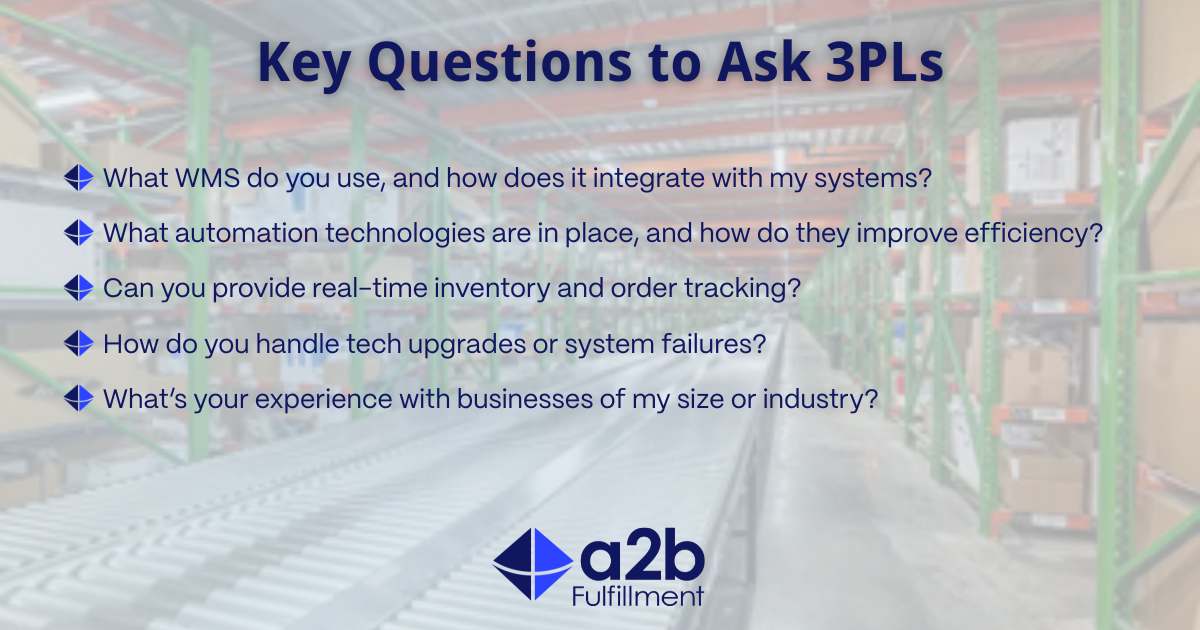
Choosing the right 3PL partner is a critical step in the switching process. A misaligned partnership can lead to operational challenges, so it’s essential to evaluate providers carefully. Here’s how to approach this process:
Identifying Your Business Needs
Begin by conducting an in-depth assessment of your logistics requirements. Consider factors like order volume, product types, geographic reach, and seasonal demand fluctuations. An e-commerce business with a large national customer base may prioritize a 3PL with multiple fulfillment facilities, while a retailer with high return rates may need robust reverse logistics services. Clearly defining your needs ensures you select a provider capable of meeting your specific demands.
Researching Industry-Leading Providers
Look for 3PLs with a strong reputation and proven expertise in your industry. Industry reports, customer reviews, and case studies can provide valuable insights into a provider’s performance. Attend trade shows or consult industry networks to identify top performers.
Comparing Service Offerings and Capabilities
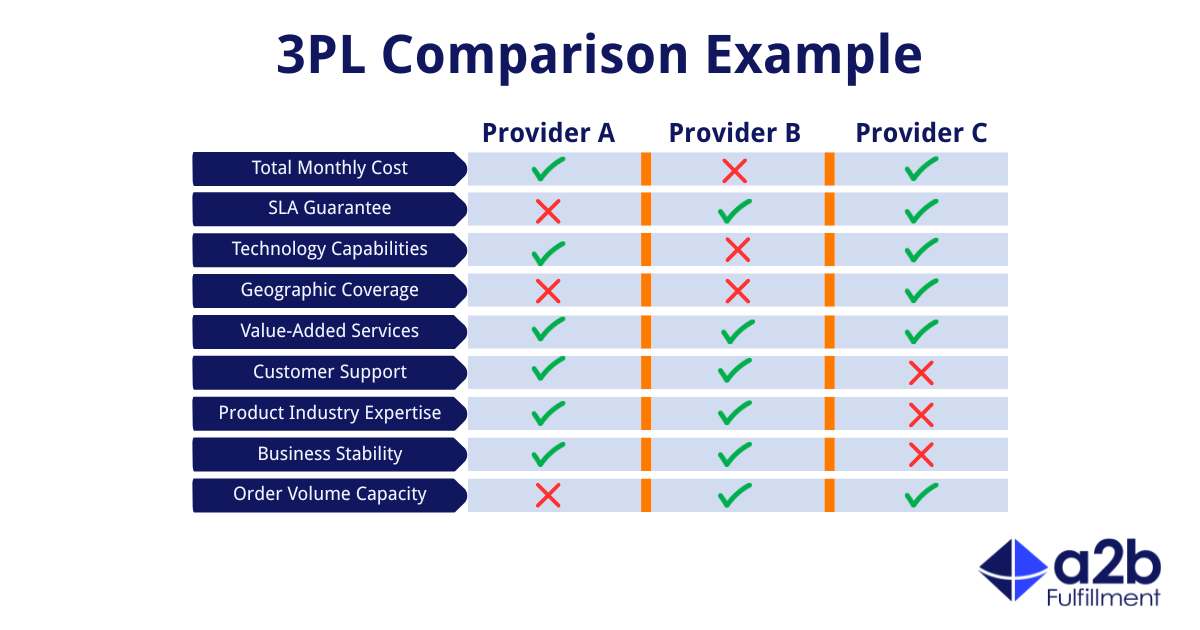
Once you’ve shortlisted potential 3PLs, compare their service offerings in detail. Evaluate their technology stack, such as whether they offer integration with your e-commerce platform or real-time analytics dashboards.
Assess their scalability to handle future growth, such as expanding into new markets. Value-added services, like kitting, packaging customization, and international shipping, can also differentiate providers. Request detailed proposals and conduct site visits to their facilities to verify their capabilities.
Technology and Automation
Selecting the right third-party logistics (3PL) partner based on technology and warehouse automation requires a structured approach to ensure alignment with your business needs.
• Determine specific technology needs, e.g., real-time inventory tracking, integration with your e-commerce platform, or returns management.
• Define automation priorities, such as robotic picking, conveyor systems, or automated packaging.
• Ensure the 3PL’s WMS is robust and integrates seamlessly with your ERP, e-commerce, or order management systems. Check for features like real-time visibility, reporting, and customizable workflows.
• Confirm the 3PL offers open APIs for easy integration with your tech stack (e.g., Shopify, Amazon, SAP).
• Look for advanced analytics tools providing insights into inventory levels, order accuracy, and shipping performance. Real-time dashboards are a plus.
• Check if they offer branded tracking emails, delivery notifications, or self-service portals for customers.
• Assess the level of automation, such as automated storage and retrieval systems (ASRS), robotic arms, or autonomous mobile robots (AMRs). Ask about their impact on speed, accuracy, and cost.
• Ensure the automation can handle peak seasons or growth. Ask about their capacity to upgrade systems.
• Inquire about how automation reduces reliance on manual labor and mitigates risks like labor shortages.
• If your products require specific conditions (e.g., cold chain, fragile items), verify if their automation supports these needs.
By focusing on these factors, you can select a 3PL whose technology and automation align with your operational goals and drive long-term efficiency.
This systematic approach to evaluation can help you identify a 3PL partner that aligns with your business goals and delivers measurable value. This due diligence sets the foundation for a successful transition.
Aligning Transition Timelines
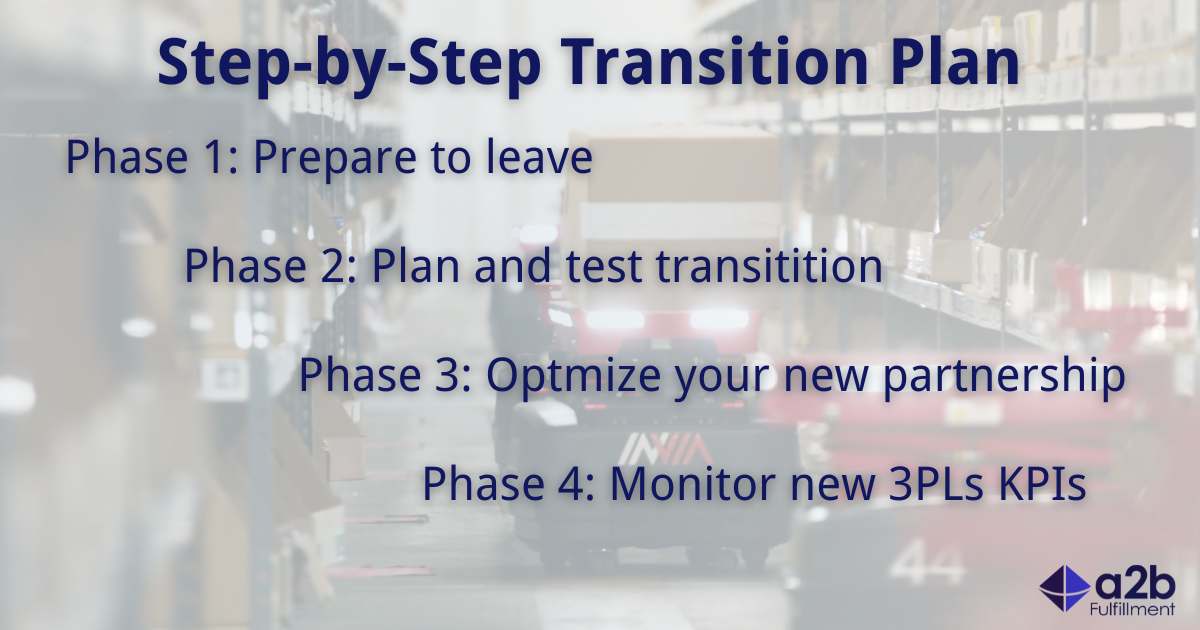
A smooth transition to a new 3PL requires meticulous planning to minimize disruptions to your operations. Timing is critical, as poorly coordinated transitions can lead to delayed shipments, inventory mismatches, or customer dissatisfaction. Here’s how to align timelines effectively:
Planning for Minimal Operational Disruption
Work closely with both your current and new 3PL to ensure continuity during the switch. Begin the transition by gradually shifting inventory to the new provider’s facilities. Coordinate with your current 3PL to maintain service levels until the new provider is fully operational. Consider running parallel operations for a short period to test the new 3PL’s capabilities without risking disruptions. This approach is particularly important for businesses with high order volumes or time-sensitive products.
Creating a Step-by-Step Transition Plan
Develop a detailed timeline that outlines every stage of the transition, from contract termination with the current 3PL to full integration with the new provider. Key steps include transferring inventory, integrating IT systems, testing order fulfillment processes, and communicating changes to customers. Assign clear responsibilities to internal teams and the new 3PL, and establish contingency plans for potential issues, such as delays in inventory transfer. Regular check-ins with both providers during the transition can help address challenges promptly.
A well-planned transition minimizes risks and ensures a seamless handover, allowing your business to maintain operational continuity and customer satisfaction.
Onboarding and Implementation
Once you’ve selected a new 3PL, effective onboarding and implementation are essential for a successful partnership. This phase involves integrating systems, training staff, and establishing performance metrics. Here’s how to approach it:
Ensuring Seamless Integration
Align your business systems with the 3PL’s platforms, such as warehouse management systems (WMS) or transportation management systems (TMS). This may involve integrating APIs to enable real-time data exchange between your e-commerce platform and the 3PL’s systems. Test integrations thoroughly to identify and resolve issues like data syncing errors. A seamless integration ensures smooth order processing and accurate inventory tracking from day one.
Training and Support for Staff
Equip your team with the knowledge and tools needed to work with the new 3PL’s processes. The 3PL should provide training sessions on their systems, workflows, and reporting tools. Additionally, designate internal champions to oversee the transition and address staff questions. Ongoing support from the 3PL, such as a dedicated account manager, can help resolve issues quickly and ensure a smooth onboarding experience.
Setting Up Data-Driven Performance Tracking
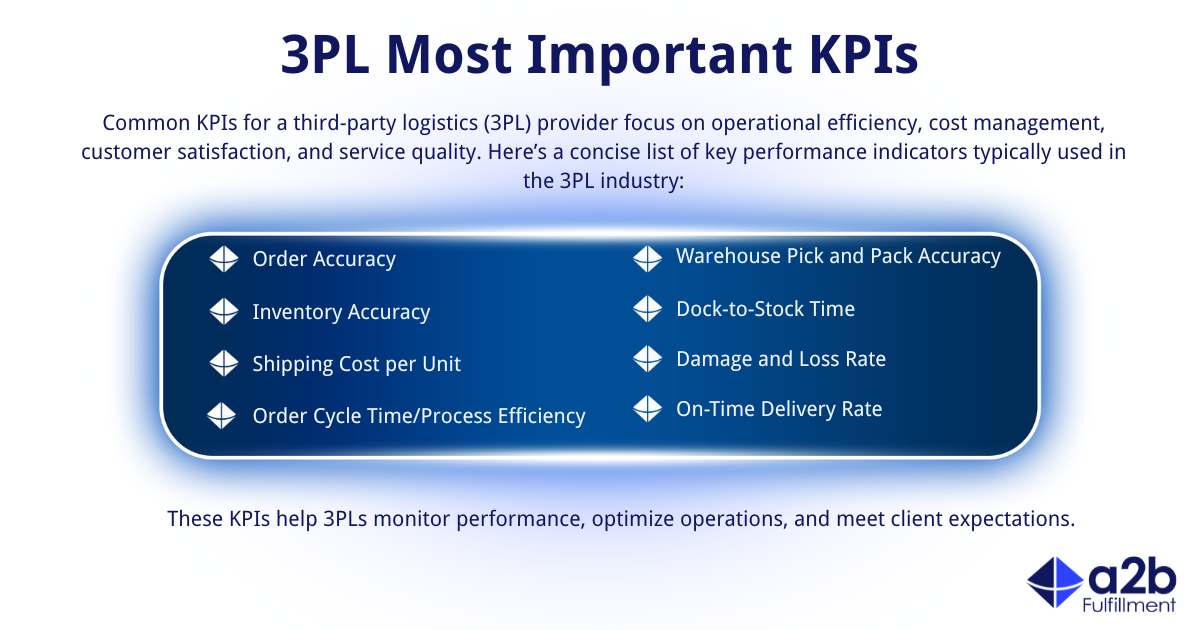
Establish key performance indicators (KPIs) to monitor the 3PL’s performance, such as order accuracy, delivery speed, and return processing times. Use analytics dashboards provided by the 3PL to track these metrics in real time. Regularly review performance data to identify areas for improvement and ensure the 3PL meets your expectations. This data-driven approach fosters accountability and drives continuous improvement.
Effective onboarding sets the stage for a productive partnership, enabling your business to leverage the full capabilities of the new 3PL.
Avoiding Common Pitfalls
Switching 3PLs can be complex, and businesses must be aware of common pitfalls to ensure a successful transition. Here are key mistakes to avoid:
Overlooking Long-Term Scalability
Choosing a 3PL based solely on current needs can lead to challenges as your business grows. Select a provider with the capacity to handle increased order volumes, new markets, or additional services like same-day delivery. Scalability ensures your 3PL remains a long-term partner rather than a short-term fix.
Misalignment with Business Goals
A 3PL’s priorities and values must align with your business’s strategic objectives. For example, if sustainability is a core value, choose a provider with eco-friendly practices, such as electric vehicle fleets or optimized routing to reduce emissions. Misalignment can lead to conflicts and inefficiencies over time.
Underestimating Transition Challenges
Transitions often involve unexpected hurdles, such as data migration errors, inventory discrepancies, or staff resistance to new processes. Anticipate these challenges by conducting thorough testing, maintaining open communication with the 3PL, and allocating sufficient resources to the transition. A proactive approach minimizes disruptions and ensures a smooth switch.
By anticipating and addressing these pitfalls, businesses can confidently navigate the complexities of switching 3PLs and achieve their desired outcomes.
Conclusion
Switching 3PLs is a strategic decision that can transform your logistics operations, driving improvements in cost efficiency, technology adoption, and customer satisfaction. By recognizing the signs that it’s time to switch, such as consistent service failures or lack of scalability, businesses can take proactive steps to find a better-aligned partner. A thorough evaluation of potential 3PLs, careful alignment of transition timelines, and robust onboarding processes are critical to a seamless switch. Additionally, avoiding common pitfalls like overlooking scalability or underestimating challenges ensures long-term success.
With the right 3PL partner, your logistics operations can become a competitive advantage, enabling you to focus on scaling your business and delighting your customers. By following the steps outlined in this guide, you can navigate the complexities of switching 3PLs with confidence, positioning your business for sustained growth and operational excellence.
About a2b Fulfillment
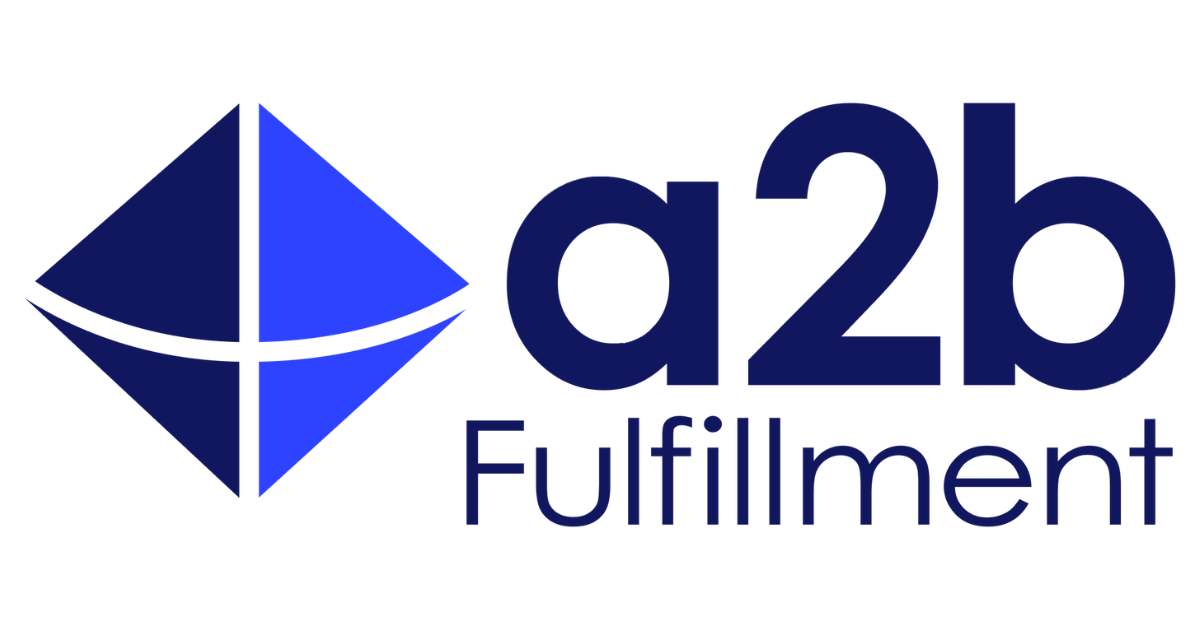
For 25 years, a2b Fulfillment has been providing order fulfillment and 3PL services to thousands of customers across a variety of industries. We are experts at handling demand volatility, reducing costs, and enhancing customer experience. With our infrastructure, technology, and automation, we enable you to thrive in a high-stakes industry. Contact a2b today.
